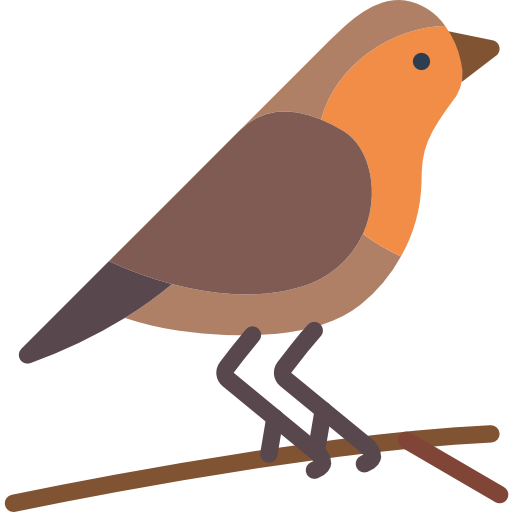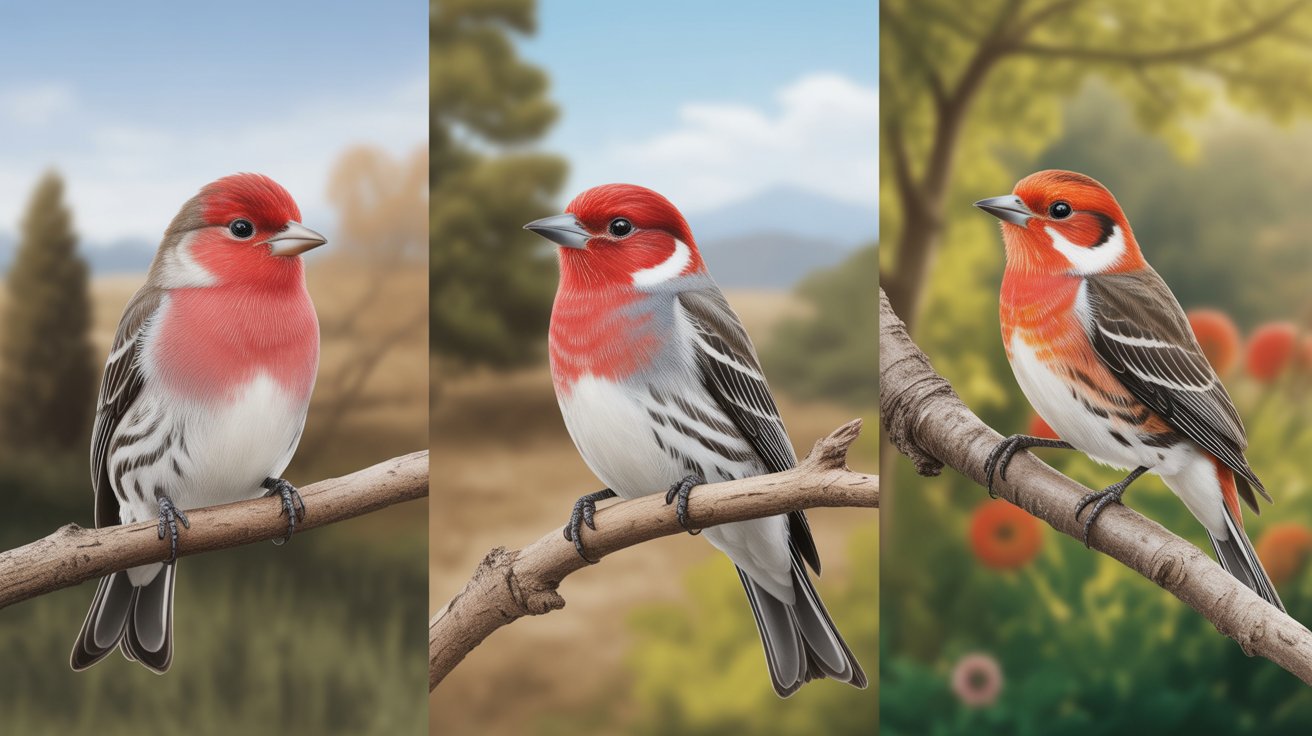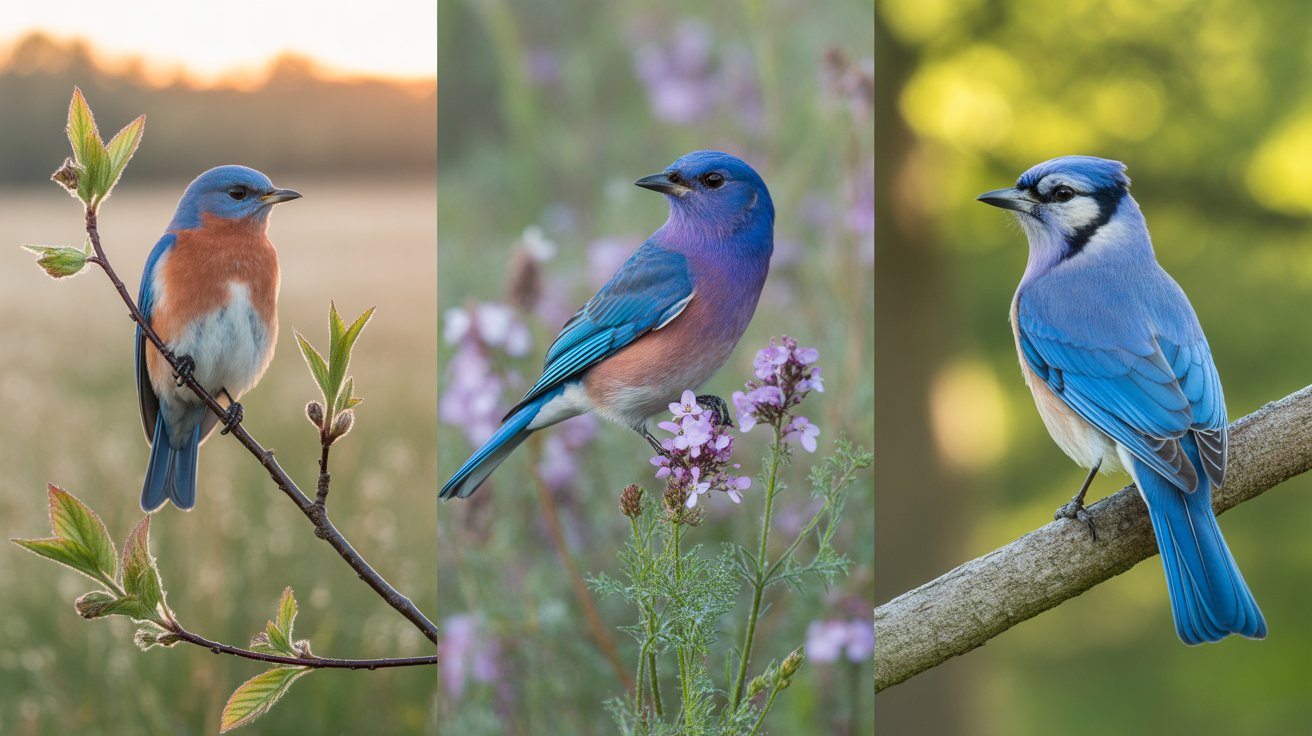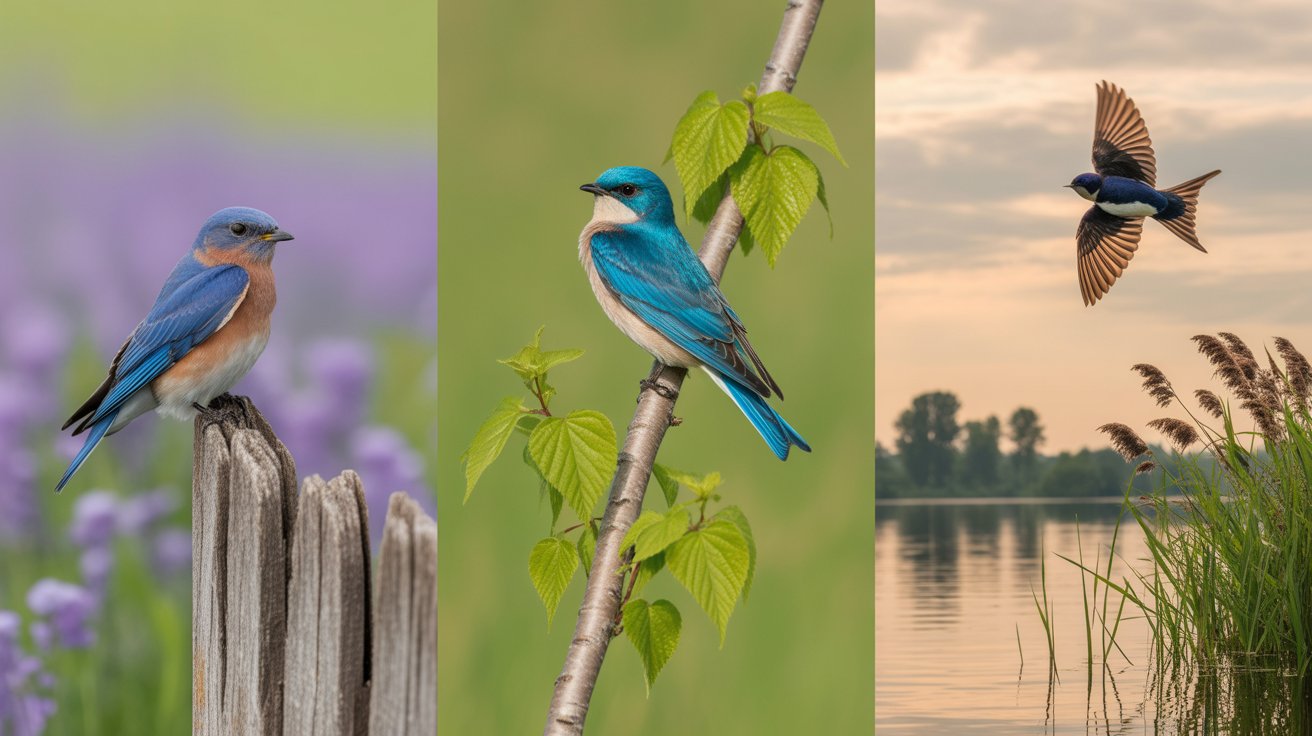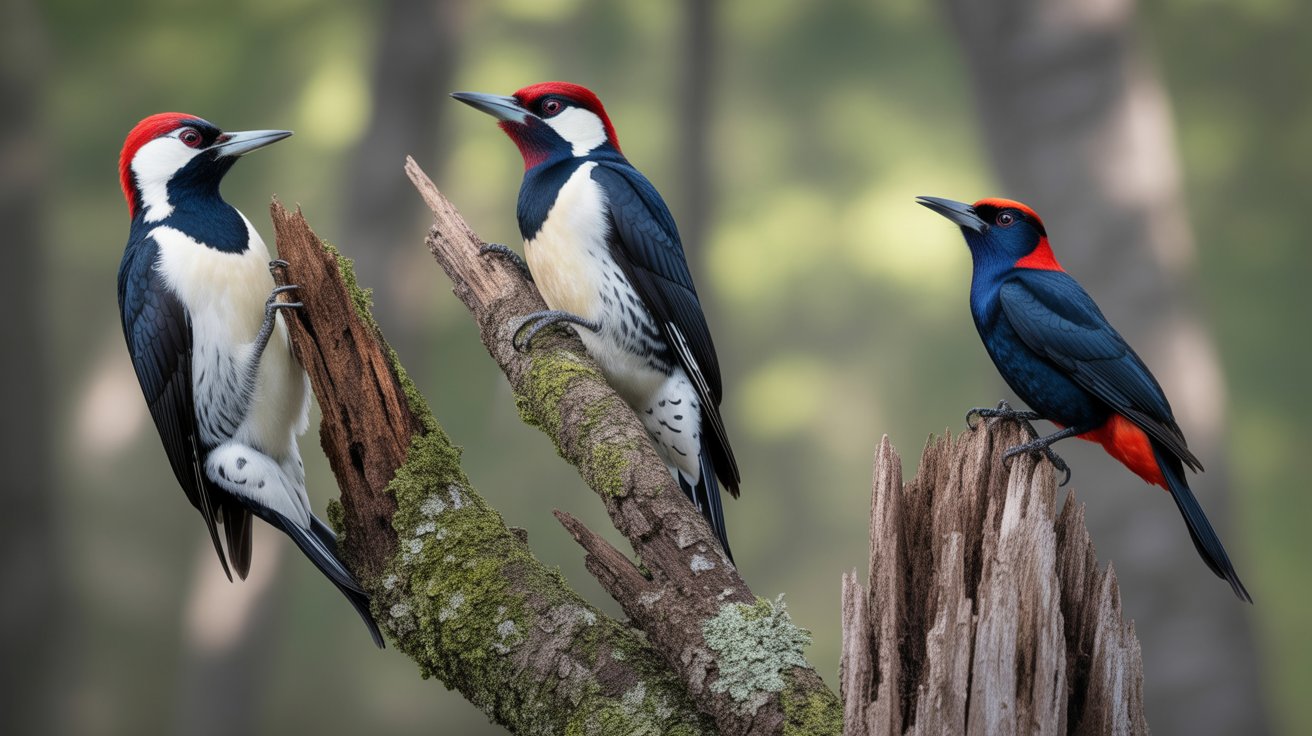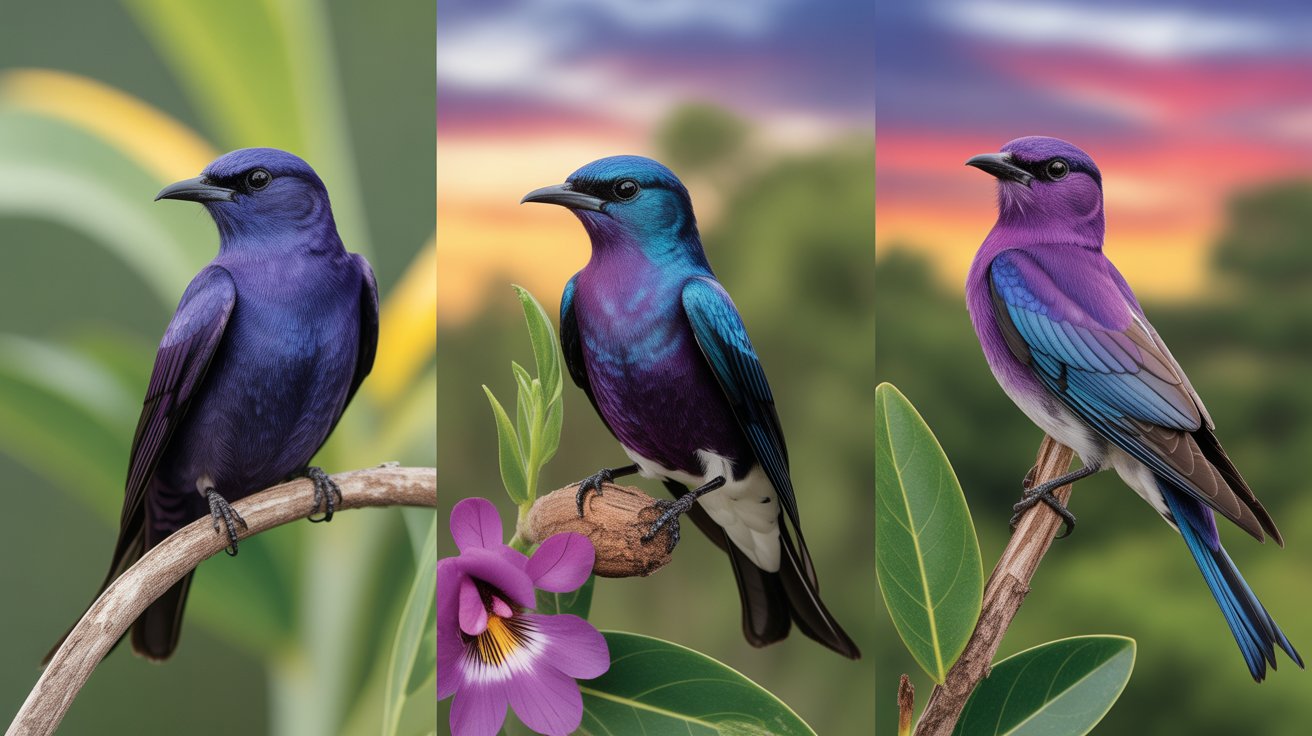Arizona is a land of extremes, from the searing heat of the Sonoran Desert to the high-elevation forests of the Mogollon Rim.
This incredible diversity in landscapes creates a spectacular haven for a vast array of bird species. Whether you are a seasoned birdwatcher or simply an admirer of nature, the birds of Arizona offer a captivating spectacle you won’t soon forget.
You might think of the desert as a barren, lifeless place, but it is, in fact, teeming with life, and its avian residents are some of the most fascinating and well-adapted creatures on Earth.
This guide is designed to help you discover and identify some of the most common and iconic birds you will encounter across the state.
From the bustling urban areas of Phoenix and Tucson to the tranquil, saguaro-filled landscapes, these feathered inhabitants are a constant presence.
You will find that many of these birds have developed unique behaviors and physical characteristics to thrive in their challenging environment. Their calls and songs are as much a part of the Arizona soundscape as the whisper of the wind through the cacti and the sizzle of the summer sun.
As you explore Arizona, you will quickly learn that birdwatching here is more than just a hobby; it’s a deep connection with the vibrant, beating heart of the ecosystem. The sheer variety is astonishing—from the tiny, jewel-like hummingbirds to the majestic soaring vultures.
You might spot a Greater Roadrunner darting across a desert road, a Gila Woodpecker drilling a nest hole in a saguaro cactus, or a flock of Gambel’s Quails scurrying in a neat line. Each sighting tells a story of survival and adaptation. So, grab your binoculars, put on a comfortable pair of shoes, and get ready to dive into the wonderful world of Arizona’s common birds.
This article will introduce you to a collection of common birds you can find in Arizona, providing you with the knowledge to identify them and appreciate their unique place in this incredible ecosystem. Get ready to be amazed by the resilience and beauty of these creatures as we explore their world.
15+ Common Birds in Arizona
Abert’s Towhee
Learn more:
Abert’s Towhee
The Abert’s Towhee is a secretive, rust-colored bird that is a resident of the Sonoran and Mojave deserts. You will often see it hopping on the ground, scratching at the leaf litter beneath dense shrubs in search of food. Its plain, warm brown plumage allows it to blend seamlessly into the desert scrub, making it a challenge to spot at times. It has a slightly plump body, a long tail, and a thick, conical bill perfect for crushing seeds. Unlike many of its songbird relatives, the Abert’s Towhee prefers to stay low and hidden, rarely venturing into the open. It is a true desert dweller, rarely found far from water sources like riverbeds, washes, and the well-irrigated yards of suburban communities.
This bird is known for its distinctive and simple call, a sharp, quick “peek.” You will often hear this sound before you see the bird itself. It’s a year-round resident of its range and is a non-migratory species, meaning you can find it in the same habitat throughout the year. The Abert’s Towhee is a monogamous bird, and pairs often stay together for life, defending a shared territory. It constructs a cup-shaped nest low in a dense shrub or tree, using twigs and plant material. Its commitment to its home range and its quiet, unassuming nature make it a gentle and constant presence in the Arizona desert landscape.
- Scientific Name: Melozone aberti
- Length: 8.3–9.1 inches (21–23 cm)
- Wingspan: 11.8–13 inches (30–33 cm)
- Weight: 1.4–1.9 ounces (40–54 g)
Anna’s Hummingbird
Anna’s Hummingbird is a dazzling, tiny bird known for its brilliant iridescent plumage and remarkable aerial acrobatics. You can often see this small creature zipping through the air, its wings beating so fast they create a blur and a distinct humming sound. The male is particularly striking, with a head and throat (known as a gorget) that shimmer in a fiery rose-pink to ruby-red color, depending on the angle of the light. The rest of its body is a metallic bronze-green. The females and juveniles are a more muted green with a gray belly and a few iridescent red spots on their throats. This bird is a year-round resident in many parts of Arizona, especially in urban and suburban areas where flowering plants and feeders are plentiful.
These hummingbirds are incredibly territorial, especially the males, who will aggressively defend their feeding grounds from other birds, and even insects, with rapid dives and loud, squeaky calls. You might be lucky enough to witness a male’s impressive courtship display, a dramatic, high-speed dive followed by a sudden upward pull, creating a loud “pop” or “buzzing” sound with its tail feathers. Anna’s Hummingbirds are vital pollinators, feeding on nectar from flowers and sugar water from feeders. Their long, slender bills are perfectly adapted for reaching deep into blossoms to extract their sugary meal. You can attract these beautiful birds to your yard by planting native flowers or setting up a hummingbird feeder.
- Scientific Name: Calypte anna
- Length: 3.9–4.3 inches (10–11 cm)
- Wingspan: 4.7 inches (12 cm)
- Weight: 0.1–0.2 ounces (2.8–4.5 g)
Cactus Wren
As Arizona’s state bird, the Cactus Wren is an emblem of the desert. This large, boisterous wren is easy to identify by its rusty-brown coloring, bold white eyebrow, and a distinctive heavily spotted chest. It is not shy and will often perch on the top of a saguaro cactus or a tall shrub, belting out its loud, raspy, and machine-gun-like song. The name “Cactus Wren” is no accident; this bird has a strong affinity for cacti, particularly the cholla and saguaro, where it builds its large, intricate nests. These nests are football-shaped structures made of grass, twigs, and other plant material, and they have a clever side entrance to deter predators.
The Cactus Wren is a non-migratory species, meaning it resides in Arizona year-round. It is highly territorial, with pairs defending their home range vigorously. You will often see them hopping and running on the ground, foraging for insects, spiders, and even small lizards. Despite its sometimes awkward appearance on the ground, it is a master of its thorny environment, navigating the sharp spines of cacti with ease. Its loud, rattling call is a quintessential sound of the Sonoran Desert, and if you live in an area with native desert plants, you are likely to hear this friendly bird’s song frequently. The Cactus Wren truly represents the hardy and vibrant spirit of the desert.
- Scientific Name: Campylorhynchus brunneicapillus
- Length: 7.1–9.1 inches (18–23 cm)
- Wingspan: 10.6–11 inches (27–28 cm)
- Weight: 1.2–1.7 ounces (33–47 g)
Curve-billed Thrasher
The Curve-billed Thrasher is another iconic desert bird, named for its most prominent feature: its long, downward-curving bill. This bird has a plain, grayish-brown body and a pale chest with faint spotting. You will most often find it on the ground, using its unique bill to probe and sweep through the soil and leaf litter in search of insects, spiders, and other invertebrates. Its foraging technique is a sight to behold, as it uses its bill to toss debris aside with a swift, side-to-side motion. The Curve-billed Thrasher is a permanent resident of the southwestern United States, including much of Arizona, where it thrives in arid environments with plenty of shrubs and cacti.
While its plumage is rather understated, its song is anything but. The Curve-billed Thrasher is a gifted singer, known for its loud, whistling call that sounds like “whit-wheet.” It also has a melodious and complex song composed of various trills and warbles, often sung from a high perch on a cactus or a tall shrub. This bird’s confidence and curiosity make it a common sight in desert parks, suburban yards, and even residential neighborhoods. It is a highly resourceful bird, often building its nest in a thorny cactus or a dense, spiny bush to protect its eggs and young from predators. If you hear a series of bold, whistled calls, look for this friendly bird with its unmistakable curved bill.
- Scientific Name: Toxostoma curvirostre
- Length: 10.6 inches (27 cm)
- Wingspan: 13.4 inches (34 cm)
- Weight: 3 ounces (85 g)
Gambel’s Quail
One of the most charming sights in the Arizona desert is a family of Gambel’s Quail scurrying along in a single-file line. This plump, round bird is easily recognized by its distinctive topknot—a comma-shaped plume that juts forward from its forehead. The males have a black face, a dark chestnut-colored crown, and a black belly patch, while the females are a more subdued gray and brown. Gambel’s Quails are highly social birds, living in groups called “coveys” throughout the year. They are primarily ground-dwellers and are strong runners, often preferring to sprint away from danger rather than fly.
You will typically find Gambel’s Quail foraging on the ground, scratching for seeds, berries, and insects. Their social nature means they are constantly communicating with each other through a variety of calls. The most common call is a series of rolling notes that sounds like “chi-CA-go-go-go.” During the breeding season, pairs will break away from the covey to nest. The female builds a simple, shallow nest on the ground, often hidden beneath a shrub or a clump of grass. Once the chicks hatch, they are immediately able to walk and follow their parents. Watching a covey of quail, with the chicks following their parents, is a truly delightful and common experience for anyone visiting or living in Arizona.
- Scientific Name: Callipepla gambelii
- Length: 9.8–11.8 inches (25–30 cm)
- Wingspan: 14–15 inches (36–38 cm)
- Weight: 5.6–7.1 ounces (160–200 g)
Gila Woodpecker
The Gila Woodpecker is an essential part of the desert ecosystem, a builder and a provider of homes for many other species. This medium-sized woodpecker has a striking black-and-white barred pattern on its back and wings, with a pale grayish-tan head and belly. The male can be identified by a small, reddish patch on the top of its head, while the female lacks this marking. The Gila Woodpecker is well-known for excavating nest cavities in the large, iconic saguaro cactus. These cavities, known as “saguaro boots,” are a vital resource for other desert animals, including Elf Owls, American Kestrels, and other birds that cannot create their own nesting holes.
You can often hear the Gila Woodpecker’s loud, chattering call, a “churrr-churrr-churrr” sound, echoing through the desert air. It forages for a variety of foods, including insects found by probing into trees and cacti, as well as fruits, berries, and even the occasional small lizard. It is a bold and common bird in Arizona, found in a variety of habitats from riparian areas to suburban yards and, of course, the saguaro forests. The Gila Woodpecker is a non-migratory species, so you can expect to see and hear it throughout the year. Its vital role in providing shelter for other creatures makes it a true keystone species of the desert.
- Scientific Name: Melanerpes uropygialis
- Length: 8.7–9.4 inches (22–24 cm)
- Wingspan: 13–16.5 inches (33–42 cm)
- Weight: 2.3 ounces (65 g)
Greater Roadrunner
The Greater Roadrunner is one of the most famous and distinctive birds of the American Southwest. It’s a large, long-tailed bird with a streaky brown and white body and a bushy crest on its head. This ground-dwelling cuckoo is a powerful runner, capable of reaching speeds up to 20 miles per hour, which it uses to chase down its prey. Despite its ability to fly, the roadrunner prefers to stay on the ground, where it forages for a diverse diet of insects, lizards, snakes (including rattlesnakes), and small mammals. You can often see a Greater Roadrunner darting across a road or a trail, a behavior that earned it its name.
This bird is an incredible hunter, using its speed and agility to catch even the fastest of prey. Its long, thick beak is a formidable tool for subduing its victims, and it has a reputation for its cunning and aggressive hunting style. The roadrunner is a master of camouflage, with its plumage allowing it to blend into the desert landscape of scrub, cacti, and arid terrain. It has a unique call, a series of low cooing sounds that descend in pitch, which you might hear from a high perch on a fence post or a tall bush. If you are lucky enough to see one, you will be captivated by its swift movements and impressive hunting prowess.
- Scientific Name: Geococcyx californianus
- Length: 20–24 inches (51–61 cm)
- Wingspan: 17–19 inches (43–48 cm)
- Weight: 10–18 ounces (280–510 g)
House Finch
The House Finch is a small, social bird that has become a familiar sight in urban and suburban areas across Arizona. The male is easily recognizable by its vibrant rosy-red head, chest, and rump, which contrasts with its streaky brown body. The female is a plain, streaky brown bird with an indistinct facial pattern. These birds are often seen in small flocks, visiting backyard feeders, and perching on power lines, fences, and rooftops. Their cheerful and melodious song, a series of warbling notes, is a constant and welcome sound in many neighborhoods.
Originally a western species, the House Finch was introduced to the eastern United States and has since expanded its range dramatically. It is a highly adaptable bird, thriving in environments modified by humans. They are primarily granivorous, feeding on seeds from a variety of plants, including weeds, grasses, and shrubs. They also readily visit backyard bird feeders, where they are a common sight. House Finches build their nests in a variety of locations, including trees, shrubs, and even on ledges of buildings, and they are known to be persistent and prolific breeders. This adaptability and their cheerful nature make them a constant and endearing presence in our daily lives.
- Scientific Name: Haemorhous mexicanus
- Length: 5.5 inches (14 cm)
- Wingspan: 8–9.8 inches (20–25 cm)
- Weight: 0.6–0.9 ounces (16–27 g)
Mourning Dove
The Mourning Dove is a slender, graceful bird with a soft gray-brown body and a long, pointed tail. You can recognize it by its small head and a faint black spot on its neck. The name “Mourning Dove” comes from its distinctive and mournful cooing call, a gentle “coo-OO-coo-coo-coo” that is a frequent and peaceful sound in both rural and urban areas. This bird is a common sight throughout Arizona, often seen walking on the ground in search of seeds, which make up the majority of its diet. They are a familiar presence in backyards, parks, and agricultural fields.
Mourning Doves are known for their strong, fast flight, which produces a characteristic whistle or whirring sound as they take off. This sound is made by their wings and is an excellent way to identify them, even when you can’t see them. They are prolific breeders, often raising multiple broods in a single year. Their nests are often simple, flimsy structures of twigs placed in a tree or a shrub. Their peaceful demeanor and gentle calls have made them a symbol of tranquility, and they are one of the most widespread and abundant birds in North America. Their constant presence and soothing song make them a familiar and beloved part of the Arizona soundscape.
- Scientific Name: Zenaida macroura
- Length: 9–12.5 inches (23–32 cm)
- Wingspan: 17–18 inches (43–45 cm)
- Weight: 3.4–5.3 ounces (96–150 g)
Northern Cardinal
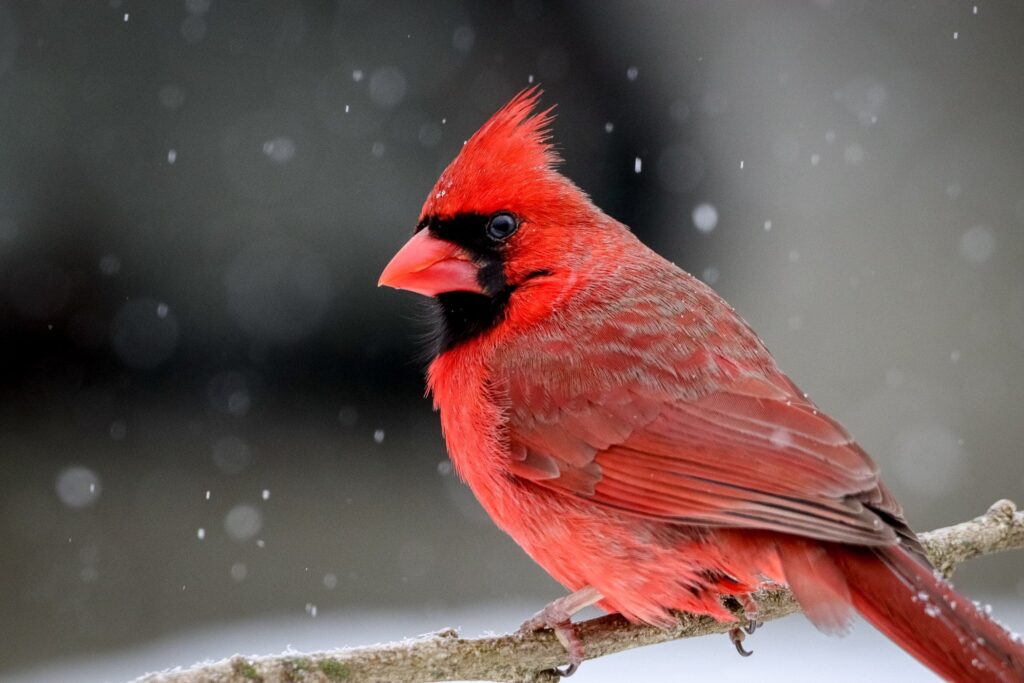 Learn more:
Northern Cardinal
Learn more:
Northern Cardinal

The Northern Cardinal is a bird that needs no introduction, especially the male with its brilliant, vibrant red plumage and a distinctive pointed crest. This striking color is a year-round sight in many Arizona landscapes, though they are more common in the eastern and central parts of the state. The female is a beautiful, warm brown with reddish tinges on her wings, crest, and tail. Both sexes have a thick, conical, reddish-orange bill and a black mask around their eyes. The cardinal’s loud, clear, and cheerful song is a familiar sound, often described as a series of whistles like “cheer-cheer-cheer” or “birdie, birdie, birdie.”
Unlike many other songbirds, the female Northern Cardinal also sings, often from the nest, communicating with the male to signal for food. Cardinals are non-migratory and are fiercely territorial, with males often seen chasing intruders from their nesting areas. You will often find them in wooded areas, dense shrubs, and suburban backyards, where they readily visit bird feeders. They are a staple at feeders, especially during the winter months when their bright red color stands out against the muted colors of the season. Their beauty and their iconic song make them a favorite among birdwatchers and casual admirers alike.
- Scientific Name: Cardinalis cardinalis
- Length: 8.3–9.3 inches (21–23.5 cm)
- Wingspan: 9.8–12.2 inches (25–31 cm)
- Weight: 1.2–2.3 ounces (34–65 g)
Phainopepla
The Phainopepla is an elegant and slender bird with a striking appearance. The male is entirely a glossy, silky black with a prominent crest and a bright red eye. In flight, a large white patch on its wing becomes visible, creating a stunning contrast against its dark body. The female is a more subdued gray, also with a crest and a white wing patch. Its name, Phainopepla, is a Greek word that means “shining robe,” a fitting description for the male’s glossy plumage. This bird is a partial migrant, with some populations moving to different habitats throughout the year, following their primary food source.
The Phainopepla has a special relationship with the desert mistletoe plant, a parasite that grows on a variety of desert trees and shrubs. The Phainopepla’s diet consists almost exclusively of the berries from this plant, and the bird is a key disperser of its seeds. It forages from a perch, often making a graceful, flycatcher-like sally to catch insects in mid-air. You will often hear its simple, whistled call as it moves from one tree to another. Its elegant silhouette and its unique ecological role make the Phainopepla a fascinating and beautiful bird to observe in the Arizona desert.
- Scientific Name: Phainopepla nitens
- Length: 7.1–8.3 inches (18–21 cm)
- Wingspan: 11.4 inches (29 cm)
- Weight: 0.6–1 ounces (18–28 g)
Say’s Phoebe
The Say’s Phoebe is a common flycatcher found in open country, from deserts to grasslands and even urban areas with open spaces. This is a medium-sized bird with a subdued but elegant appearance. Its plumage is a soft gray-brown on the back and head, with a rusty-cinnamon wash on its belly and undertail. Its most distinctive feature is its upright posture and its habit of flicking its tail up and down while perched, a behavior characteristic of many flycatchers. You will often find it sitting on a prominent perch, like a fence post, a telephone wire, or the top of a bush, from which it makes quick sallies to catch insects in mid-air.
The Say’s Phoebe is known for its simple, mournful, and whistled song, often a two-note call that sounds like “pi-WEE” or “pee-tew.” It is a constant and often unnoticed presence in the Arizona landscape, a tireless hunter of insects. It is also an adaptable nester, often building its cup-shaped nest under the eaves of buildings, bridges, and other man-made structures. It is a non-migratory resident in many parts of Arizona, and its gentle demeanor and familiar calls make it a constant and comforting part of the desert soundscape.
- Scientific Name: Sayornis saya
- Length: 6.3–7.5 inches (16–19 cm)
- Wingspan: 11.8–12.6 inches (30–32 cm)
- Weight: 0.6–0.8 ounces (17–23 g)
Turkey Vulture
While not a songbird, the Turkey Vulture is an incredibly common and important bird in Arizona. You will often see it soaring high in the sky, riding thermals with its wings held in a shallow V-shape, a posture known as a dihedral. This large bird is easily identified by its bald, red head, which gives it a turkey-like appearance, and its dark, brownish-black plumage. The undersides of its wings are two-toned, with a silvery-gray on the flight feathers that contrasts with the darker body, a helpful ID feature when seen from below. The Turkey Vulture is a scavenger, feeding on carrion and playing a vital role in cleaning up the environment.
This bird is an expert at finding food with its incredible sense of smell, an ability that is rare among birds. It is often seen circling in the sky, its presence a sign that there may be a carcass nearby. Despite their reputation, Turkey Vultures are a crucial part of the ecosystem, preventing the spread of disease by consuming dead animals. They are a common sight in Arizona, both soaring overhead and perched on trees, cliffs, and telephone poles. Their flight is truly a thing of beauty, a masterful display of soaring with barely a flap of their wings.
- Scientific Name: Cathartes aura
- Length: 26–32 inches (66–81 cm)
- Wingspan: 68–72 inches (173–183 cm)
- Weight: 2.6–5.3 pounds (1.2–2.4 kg)
Verdin
The Verdin is a tiny but energetic bird of the desert, and its name is derived from the French word for green, a nod to the olive-green tint on its wings. This small, gray bird is a constant and quick mover, flitting through desert shrubs and mesquite trees in search of insects. The most striking feature of the Verdin is its bright yellow face, which contrasts sharply with its gray body. It also has a small, reddish patch on the bend of its wing, though this can be difficult to see. Its small, pointed bill is perfect for probing into crevices for food.
This diminutive bird is highly adaptable and is a permanent resident of the southwestern desert. The Verdin builds a remarkable nest, a large, intricate, spherical structure woven from twigs, with a small entrance hole on the side. This nest is not only used for breeding but also serves as a roosting spot for the bird to escape the cold desert nights. Its high-pitched, whistled call, a series of “tsee-tsee-tsee” notes, is a constant sound in the desert scrub. The Verdin’s tenacity and its impressive nest-building skills are a testament to its resilience in a challenging environment.
- Scientific Name: Auriparus flaviceps
- Length: 3.9–4.7 inches (10–12 cm)
- Wingspan: 5.5–6.7 inches (14–17 cm)
- Weight: 0.3–0.4 ounces (8–12 g)
White-winged Dove
The White-winged Dove is a large, stocky dove that is a constant and loud presence in the Sonoran Desert. Its name comes from the striking white stripe on its wings, which is especially noticeable in flight. It has a grayish-brown body, a rounded tail, and a bright blue ring of skin around its eyes. Its call is a loud, almost hooting sound that is often heard from the tops of trees or on power lines. The call is a repetitive “who-cooks-for-you” or “coo-coo-coo-coo-coo,” and its persistence makes it one of the most familiar bird sounds of the Arizona summer.
These doves are highly social and often congregate in large flocks, especially around food and water sources. They are a constant presence in suburban yards, where they readily visit bird feeders and water baths. White-winged Doves are migratory in some parts of their range but are year-round residents in much of Arizona. Their diet consists mainly of seeds and fruits, and they are particularly fond of the fruit from saguaro cacti, a food source that is essential for their survival in the desert. Their large numbers and loud calls make them an unmistakable part of the Arizona experience.
- Scientific Name: Zenaida asiatica
- Length: 11–12 inches (28–30 cm)
- Wingspan: 18–20 inches (46–51 cm)
- Weight: 5.3–7.1 ounces (150–200 g)
Common Raven
The Common Raven is a large, intelligent, all-black bird with a thick bill and a wedge-shaped tail. It is a surprisingly widespread and adaptable bird, found in a wide variety of habitats across Arizona, from remote deserts to city parks. Its size and its deep, croaking call, a series of “kraaak-kraaak” sounds, distinguish it from the smaller and more common American Crow. Ravens are known for their intelligence, curiosity, and complex social behaviors. They are often seen soaring high in the sky, performing impressive aerial displays.
Ravens are omnivores and scavengers, with a highly varied diet that includes carrion, insects, fruits, grains, and even the eggs and young of other birds. Their opportunistic nature allows them to thrive in many different environments. They are a common sight on roadsides, where they feed on roadkill. Ravens often form strong pair bonds and are known for their complex vocalizations, which can include a variety of calls and even mimicry of other sounds. Their intelligence and their powerful presence in the sky make them a fascinating and sometimes mysterious part of the Arizona landscape.
- Scientific Name: Corvus corax
- Length: 24–27 inches (61–69 cm)
- Wingspan: 45–48 inches (114–122 cm)
- Weight: 2.2–3.5 pounds (1–1.6 kg)
Conclusion
From the ground-dwelling Gambel’s Quail to the soaring Turkey Vulture, the birds of Arizona are a testament to the remarkable biodiversity of the state. Each species, with its unique adaptations, behaviors, and calls, plays a vital role in the delicate balance of the desert ecosystem. You have now been introduced to some of the most common and iconic feathered residents you are likely to encounter. This knowledge will not only help you identify them but also deepen your appreciation for the natural world that surrounds you.
Whether you live in Arizona or are just visiting, taking the time to observe these incredible creatures can be a truly rewarding experience. The simple act of noticing a Gila Woodpecker at work or hearing the mournful call of a Mourning Dove can create a lasting memory and a connection to this unique environment. We encourage you to continue your journey of discovery, perhaps by adding a bird feeder to your yard, exploring a local park, or simply keeping your eyes and ears open on your next walk. The birds of Arizona are waiting to share their beauty and resilience with you.
FAQs
What is the most common bird in Arizona?
The Mourning Dove is one of the most abundant and widespread birds in Arizona, found in both urban and rural settings. Its familiar cooing call and graceful presence make it a constant part of the state’s soundscape.
What is the state bird of Arizona?
The Cactus Wren is the official state bird of Arizona. It is a large, boisterous, and charismatic bird that is perfectly adapted to the desert environment, where it builds its unique nests inside cacti.
Do I need to go to a special place to see these birds?
Many of the birds on this list, such as the House Finch, Mourning Dove, and Northern Cardinal, are common in suburban and urban areas. You can often see them in your own backyard, local parks, and residential neighborhoods.
Why are so many desert birds a brown or gray color?
Many desert birds have evolved brown or gray plumage to blend in with their surroundings. This camouflage helps them avoid predators and sneak up on their own prey, providing a significant advantage in the arid, open landscape of the desert.
What is the largest bird of prey in Arizona?
While the Turkey Vulture is a very large scavenger, the largest bird of prey in Arizona is the Bald Eagle, which is found near rivers and large bodies of water. The Golden Eagle is also a major raptor found in the state, often soaring over open spaces.
